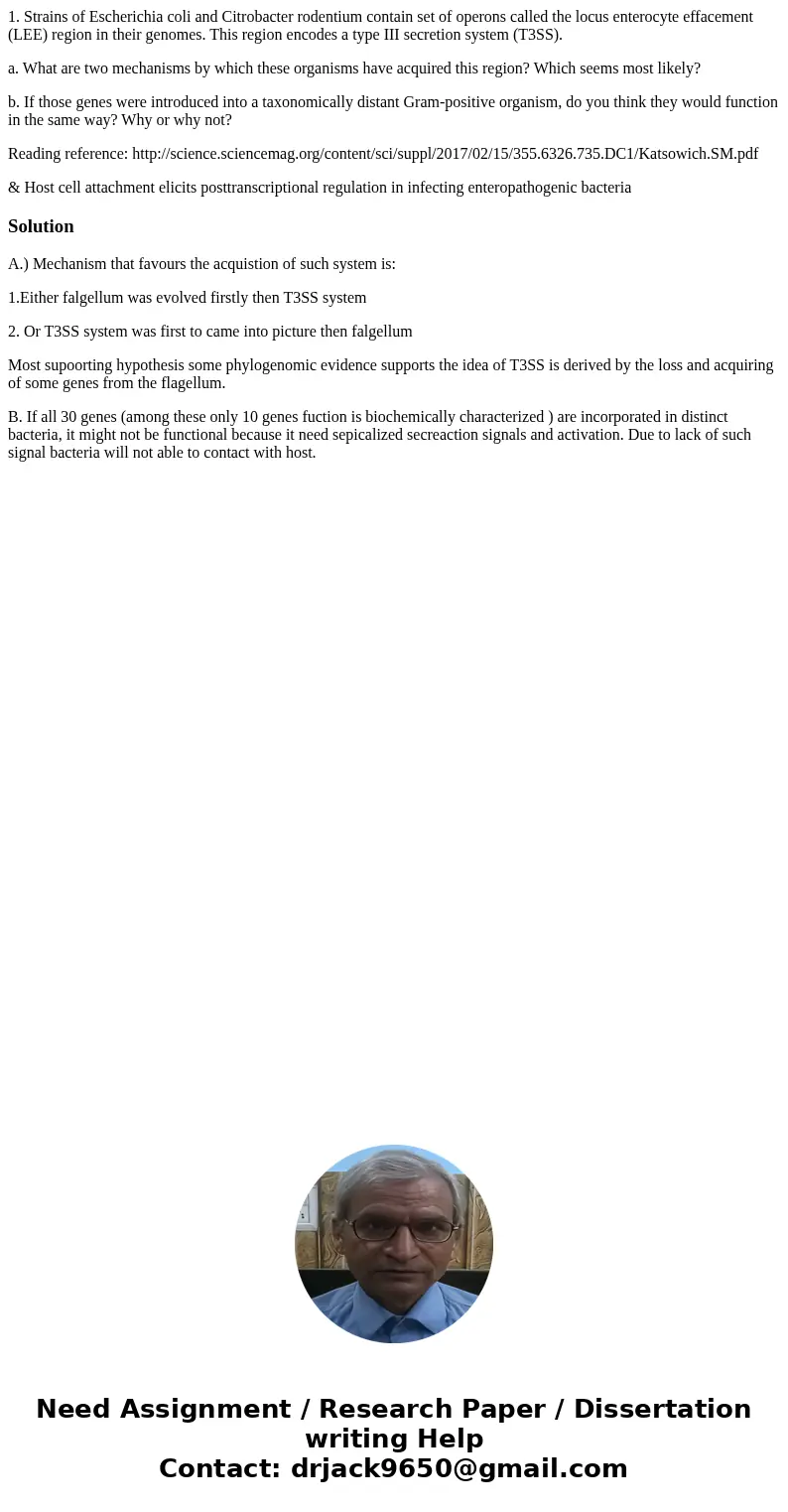1 Strains of Escherichia coli and Citrobacter rodentium cont
1. Strains of Escherichia coli and Citrobacter rodentium contain set of operons called the locus enterocyte effacement (LEE) region in their genomes. This region encodes a type III secretion system (T3SS).
a. What are two mechanisms by which these organisms have acquired this region? Which seems most likely?
b. If those genes were introduced into a taxonomically distant Gram-positive organism, do you think they would function in the same way? Why or why not?
Reading reference: http://science.sciencemag.org/content/sci/suppl/2017/02/15/355.6326.735.DC1/Katsowich.SM.pdf
& Host cell attachment elicits posttranscriptional regulation in infecting enteropathogenic bacteria
Solution
A.) Mechanism that favours the acquistion of such system is:
1.Either falgellum was evolved firstly then T3SS system
2. Or T3SS system was first to came into picture then falgellum
Most supoorting hypothesis some phylogenomic evidence supports the idea of T3SS is derived by the loss and acquiring of some genes from the flagellum.
B. If all 30 genes (among these only 10 genes fuction is biochemically characterized ) are incorporated in distinct bacteria, it might not be functional because it need sepicalized secreaction signals and activation. Due to lack of such signal bacteria will not able to contact with host.

 Homework Sourse
Homework Sourse